Neutrophils are essential for induction of vaccine-like effects by antiviral monoclonal antibody immunotherapies
- PMID: 29720574
- PMCID: PMC6012508
- DOI: 10.1172/jci.insight.97339
Neutrophils are essential for induction of vaccine-like effects by antiviral monoclonal antibody immunotherapies
Abstract
Using a mouse retroviral model, we have shown that mAb-based immunotherapy can induce life-long endogenous protective immunity (vaccine-like effects). This observation has potentially important consequences for treating life-threatening human viral infections. Here, we investigated the role of neutrophils in this effect. Neutrophils are innate immunity effector cells with well-established microbe-killing activities that are rapidly mobilized upon infection. They are also emerging as orchestrators of innate and adaptive immunities. However, their immunomodulatory activity during antiviral mAb immunotherapies has never been studied. Our data reveal that neutrophils have an essential role in immunotherapy-induced immune protection of infected mice. Unexpectedly, neutrophils have a limited effect in controlling viral propagation upon passive immunotherapy administration, which is mostly mediated by NK cells. Instead, neutrophils operate as essential inducers of a potent host humoral antiviral response. Thus, neutrophils play an unexpected key role in protective immunity induction by antiviral mAbs. Our work opens approaches to improve antiviral immunotherapies, as it suggests that preserving neutrophil functions and counts might be required for achieving mAb-induced protective immunity.
Keywords: Adaptive immunity; Immunotherapy; Infectious disease; Neutrophils; Therapeutics.
Conflict of interest statement
Figures
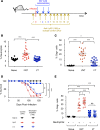
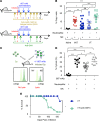
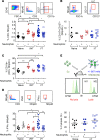
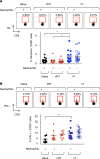
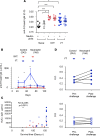
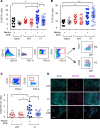
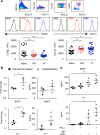
Similar articles
-
Long-lasting protective antiviral immunity induced by passive immunotherapies requires both neutralizing and effector functions of the administered monoclonal antibody.J Virol. 2010 Oct;84(19):10169-81. doi: 10.1128/JVI.00568-10. Epub 2010 Jul 7. J Virol. 2010. PMID: 20610721 Free PMC article.
-
A crucial role for infected-cell/antibody immune complexes in the enhancement of endogenous antiviral immunity by short passive immunotherapy.PLoS Pathog. 2010 Jun 10;6(6):e1000948. doi: 10.1371/journal.ppat.1000948. PLoS Pathog. 2010. PMID: 20548955 Free PMC article.
-
Distinct roles of NK cells in viral immunity during different phases of acute Friend retrovirus infection.Retrovirology. 2013 Nov 1;10:127. doi: 10.1186/1742-4690-10-127. Retrovirology. 2013. PMID: 24182203 Free PMC article.
-
Insufficient natural killer cell responses against retroviruses: how to improve NK cell killing of retrovirus-infected cells.Retrovirology. 2016 Nov 8;13(1):77. doi: 10.1186/s12977-016-0311-8. Retrovirology. 2016. PMID: 27821119 Free PMC article. Review.
-
AID for innate immunity to retroviral transformation.Immunity. 2006 Jun;24(6):671-672. doi: 10.1016/j.immuni.2006.06.005. Immunity. 2006. PMID: 16782023 Review.
Cited by
-
The anti-B7-H4 checkpoint synergizes trastuzumab treatment to promote phagocytosis and eradicate breast cancer.Neoplasia. 2020 Nov;22(11):539-553. doi: 10.1016/j.neo.2020.08.007. Epub 2020 Sep 20. Neoplasia. 2020. PMID: 32966956 Free PMC article.
-
Convalescent Plasma for Infectious Diseases: Historical Framework and Use in COVID-19.Clin Microbiol Newsl. 2021 Feb 15;43(4):23-32. doi: 10.1016/j.clinmicnews.2021.02.001. Epub 2021 Feb 5. Clin Microbiol Newsl. 2021. PMID: 33564204 Free PMC article.
-
Differential and sequential immunomodulatory role of neutrophils and Ly6Chi inflammatory monocytes during antiviral antibody therapy.Emerg Microbes Infect. 2021 Dec;10(1):964-981. doi: 10.1080/22221751.2021.1913068. Emerg Microbes Infect. 2021. PMID: 33858301 Free PMC article.
-
Optimize Prime/Boost Vaccine Strategies: Trained Immunity as a New Player in the Game.Front Immunol. 2021 Mar 8;12:612747. doi: 10.3389/fimmu.2021.612747. eCollection 2021. Front Immunol. 2021. PMID: 33763063 Free PMC article. Review.
-
Fc-Dependent Immunomodulation Induced by Antiviral Therapeutic Antibodies: New Perspectives for Eliciting Protective Immune Responses.Antibodies (Basel). 2022 Jul 26;11(3):50. doi: 10.3390/antib11030050. Antibodies (Basel). 2022. PMID: 35892710 Free PMC article. Review.
References
Publication types
MeSH terms
Substances
LinkOut - more resources
Full Text Sources
Other Literature Sources

